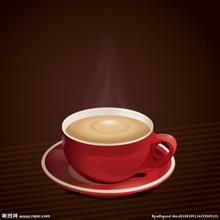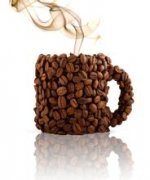Brief introduction of College Cafe in Montmartre

Rousseau, Diderot, and the reactionary three heroes Robespierre, Danton and Mara are all regulars here. At that time, several works of Voltaire and Diderot's world's first encyclopedia were written here, as well as red, white and blue tricolor hats with meaning in the great reaction. A few years before the outbreak of the rebellion, this place was always a place full of emotions and storms. It is said that Napoleon came here before he started and left a cap for drinking coffee. Afterwards, it was a social occasion for first-class writers, actors, gentlemen and ladies to gather and talk, including Taifu's Hugo, Balzac, GeorgeSand, Zola, and so on. and later set up the literary publication Prokopu in the name of this cafe. As a result, the traditional outfits, antique installations and all kinds of cultural relics that exist in the museum are rated rich. the style and scenery in the museum seem to have not been "washed and reformed" because of the changes during the period, and the customers still love its classicality.
First, I have heard that France once drank less coffee because of a shortage of coffee, and immediately saw more people taking a nap. It sounds like a boast, but the French are addicted to coffee. When the "Gulf Peace" broke out in 1991, France was also one of the countries participating in the war. worried about the impact of the war on the supply of daily necessities, a small piece of foreign citizens rushed to the supermarket to buy it. Even the TV station caused a sensation when the camera looked at the owners who were full of "scarce supplies", only to find that what they took the most was coffee and sugar. At one time, it became a big joke at the moment.
It seems that the fineness and delicacy of French coffee does not lie in the taste, but in the environment and sentiment. Most of them are unwilling to drink alone behind closed doors. They just want to make a small cup of coffee in the desert, even if the value of a small cup is boiled at home. They did not drink hurriedly, but gradually tasted it, tasted it carefully, read books and newspapers, talked about it, and "soaked" for half a day. At the science and technology exhibition, I walked through six or seven major exhibition halls, and I saw that there were cafes at the corner to facilitate exchanges and negotiations among people from all walks of life.
Second, the French develop this habit of drinking coffee, blindly and unconsciously expressing a kind of elegant charm, a kind of romantic sentiment, a kind of comfortable feeling of enjoying life. Or this is a kind of old-fashioned and fantasy coffee culture. Because of this, the places where people can rest and drink coffee in France can be said to be broad alleys and alleys, under the shade of trees, by the side of the road, by the square, on the river bank, on cruise ships and on the balcony facing the street, resulting in the Eiffel Tower. And the model, style, size-regardless of size, there are coffee shops, restaurants, halls, rooms, these are subordinate to the building, covered by the roof. And the most popular and romantic ones, those open-air cafes as usual, are almost a portrayal of French life.
Many open-air cafes occupy many public places, such as a corner of the square, sidewalks on the streets, even on the bustling Xiang Xie Li she path, the colorful sunshade has become a strange street view decorating Paris, it seems that the municipal government is also rated to do it again. The chairs of the cafe are almost all arranged towards the road, which is obviously a deliberately configured auditorium, and the road on the other side is the big stage on which the play will never repeat. Look at those unconventional guests, listening to the hustle and bustle of the street, hubbing shoulder rub, a cup under the sun umbrella, leisurely and leisurely. You can take a local newspaper and read it aimlessly, or puff at your cigarette, or watch the beauty in the alley. Here, there will be bright fashion flash, there will be intoxicating fragrance, there will be Jionna colorful girls passing by, and there will often be strange musicians to bring you beautiful melodies. This situation makes people indulge. It is not difficult to see the whispering lovers on the seat hugging and kissing, which is not the envy of others, because it is in France. Suppose you have a good fortune, maybe there is a French MM sitting on the chair next to you, which will add a lot of visual enjoyment to you. Here, Parisian girls sipping coffee and reading fashion magazines are regarded as beautiful.
Third, in addition to those open-air cafes that look up to the sky, there is no lack of magnificent or simple and elegant people in about 170000 of the cafes in France. Quite in Paris, some cafes are themselves legendary attractions. During the old dynasty in the Middle Ages, the focus of French cultural life was on the court. During the enlightenment of the 18th century, the cultural center of gravity began to shift to various salons, clubs and cafes. The LeProcoPe Cafe in Latin District, for example, is associated with the French reactionary friends who influenced the whole world more than two hundred years ago. Voltaire, an European thinker of enlightenment flow in the 18th century,
The College Cafe in Montmartre is a symbol of the era of the University of Paris in the 19th century. The neighborhood is permanently inhabited by artists from all over the world, surrounded by cafes and built together during the splendid University of Paris. Opposite St. Germain's Cathedral, there is a 19th-century LesDeuxMagots cafe, but it rose to fame in the 1920s. A group of surrealist writers and painters have been eloquent here for a long time, igniting the flames of artistic thinking, and as a result, they created a "Demag Literature Award" named after this cafe, which lasted until the next day. I heard that Hemingway used to drink coffee here to capture creative inspiration. However, a cup of coffee sold elsewhere for 4 to 6 francs can be sold for 22 francs here, and this literary and artistic creation is really valuable. What is interesting is that the nearby DeFlore Cafe, which is also a famous academic garden, flourished after the war with the help of more philosophers. At that time, Sartre, Simon Bova and others used to sit in still seats, but now they are also marked with bronze medals. As there are always cultural elites going in and out of these two cafes, the area is gradually full of bookstores, more and more literary cafes and restaurants, and later became the birthplace of Belle-Lette.
Important Notice :
前街咖啡 FrontStreet Coffee has moved to new addredd:
FrontStreet Coffee Address: 315,Donghua East Road,GuangZhou
Tel:020 38364473
- Prev

What happens when Vietnamese coffee is thick and warm and mellow to make fine coffee?
If we say that Central Plains Coffee has a strong and strong taste, then Highland Coffee is elegant and mellow; if Central Plains Coffee focuses on product research and development, then Highland Coffee emphasizes store decoration; if Central Plains Coffee is the first choice for Vietnamese, then Highland Coffee is favored by tourists; if Central Plains Coffee catches the industrial and peasant class, then Highland Coffee has mastered the middle class.
- Next

Coffee knowledge Popularization in Vietnam: a Special drip filter Coffee Cup
The reason for the unique taste of Vietnamese coffee is said to be the addition of butter (occasionally vegetable oil) in the baking process and the use of deep baking in French baking, which is definitely a heavy taste, so it is no wonder that Vietnamese like to drink it by filtering. and drink with the sweet condensed milk, otherwise, it will be fierce on the forehead, and some people even drink it straight.
Related
- Detailed explanation of Jadeite planting Land in Panamanian Jadeite Manor introduction to the grading system of Jadeite competitive bidding, Red bid, Green bid and Rose Summer
- Story of Coffee planting in Brenka region of Costa Rica Stonehenge Manor anaerobic heavy honey treatment of flavor mouth
- What's on the barrel of Blue Mountain Coffee beans?
- Can American coffee also pull flowers? How to use hot American style to pull out a good-looking pattern?
- Can you make a cold extract with coffee beans? What is the right proportion for cold-extracted coffee formula?
- Indonesian PWN Gold Mandrine Coffee Origin Features Flavor How to Chong? Mandolin coffee is American.
- A brief introduction to the flavor characteristics of Brazilian yellow bourbon coffee beans
- What is the effect of different water quality on the flavor of cold-extracted coffee? What kind of water is best for brewing coffee?
- Why do you think of Rose Summer whenever you mention Panamanian coffee?
- Introduction to the characteristics of authentic blue mountain coffee bean producing areas? What is the CIB Coffee Authority in Jamaica?

